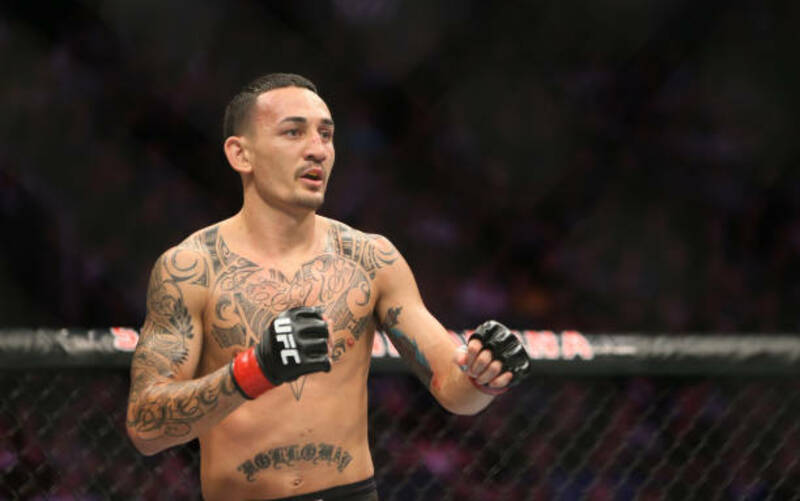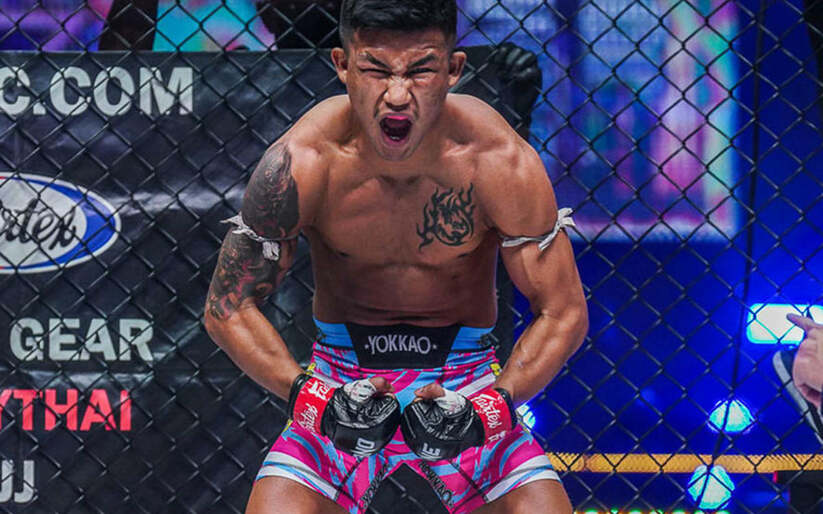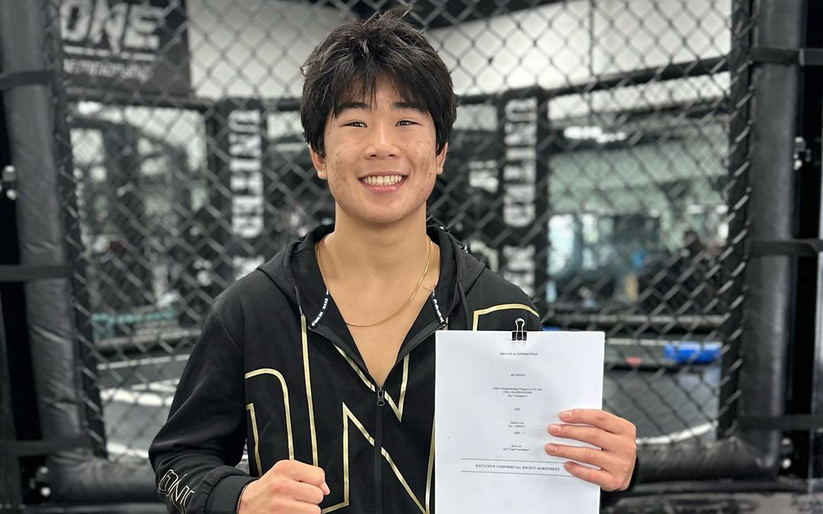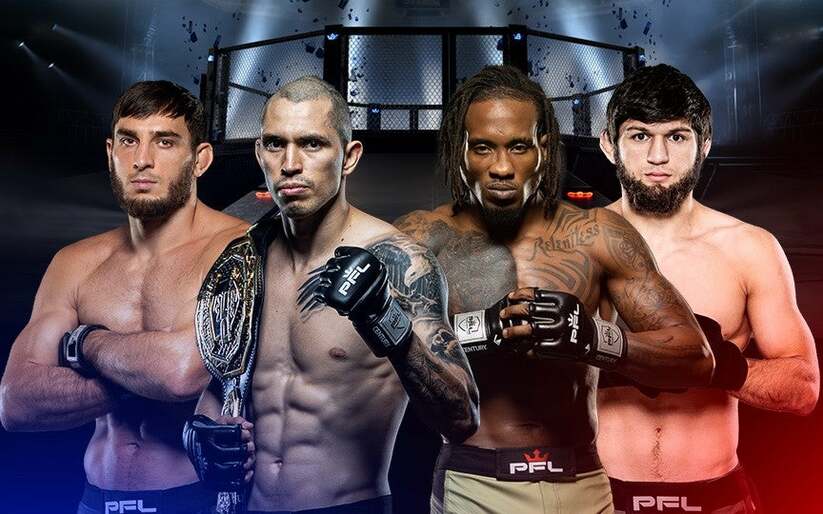Expert analyst Danny Martin takes us through a technically driven career narrative of the living legend Max Holloway.
Walk Like a Champion
Adaptability is one of the most important traits for any elite fighter, but its broad range of meaning opens the door to a myriad of applications. Being able to make adjustments or reads on an opponent in the midst of an ever-changing battlefield requires a significant amount of poise, clarity, and depth of skill to execute effectively. For example, a fighter might become predictable with the rhythm of their jab-cross and so the opponent is able to adapt to the rear hand punch by slipping their head off the centerline and time body shots off the jab. Sometimes, fighters adapt incorrectly, and sell out throwing power punches in the pocket until they are exhausted, because their opponent doggedly refused to stay out of their face (just as Marlon Moraes fell victim to at the hands of Henry Cejudo). In the highest levels of mixed martial arts, the ability to reconfigure an approach on the fly and from fight-to-fight has become such a vital tool that it is nearly impossible to think of any great fighter in the sport today without some level of elasticity in their technical game.
However, adaptability as a trait goes beyond individual tactical or encompassing strategic decisions made by a fighter and their camp. Perhaps the most important adaptions are the ones seen across long careers, in which fighters are forced to reconfigure the nuts and bolts of their technical game to account for factors out of their control. Some of these factors may include age, wear-and-tear, opposition, and weight class. Widening the scope further, it’s one of the reasons that fighters typically end their careers as moderately different fighters than they began. Frankie Edgar moved like the Energizer Bunny at lightweight and was largely a committed point fighter as champion, nabbing takedowns to secure rounds on scorecards. When he dropped to featherweight, he turned into one of the most crushing top position wrestler/grapplers the sport has ever seen, utilizing less springy movement but more effective chain wrestling and a greater emphasis on defense.
Dominant champions best exemplify these sort of career-defining trend lines. Contenders trying to earn their way to a title shot often have very different approaches and mindsets than champions, who need to protect their keep at all costs.
Bloody Elbow analyst, Phil Mackenzie, articulates it beautifully, “…the change from ‘taking’ to ‘defending’ which often translates to a kind of insularity, or deflection. It’s what changed Jon Jones from a top-control whirlwind to a man who kicked people in the knee. It defined UFC Aldo as compared to ‘WEC Aldo,’” (UFC 196 Post-fight patterns: On McGregor and rules).
It can take a couple defenses before defending champions make this transition from hungry contender to protective ruler. Jones ran through his first handful defenses without breaking a sweat before even fighting to a decision.
At its worst, this defensive mindset can cause champions to fight with absolutely no intent to take any risks whatsoever, as maintaining their belt (and bargaining chip) is paramount. Former welterweight champion Tyron Woodley was voraciously maligned for delivering some absolutely dreadful title fights in a historically rich division, with a take-no-risks strategy in play at all times. Amanda Nunes and Valentina Shevchenko effectively fought to a draw in their title fight, because neither woman was willing to risk “taking” the belt from the other. Conversely, fighters who don’t develop this defensive approach, such as Conor McGregor, keep attempting to move up forever until they are violently sent back down to earth by biting off more than they can chew.
All of this brings us to Max Holloway.
From a moment-to-moment perspective, Holloway is among the two or three best adapters in the sport, full stop. His technical striking game is incredibly deep and fundamentally sound, which means that he is able to build off his approach as fights progress. Early in fights, he will probe and dictate rhythm with his jab, occasionally digging in some body shots here and there. If his opponent attempts to throw back, Max might be the best fighter in the sport at converting defensive angles into offensive ones, never exiting in straight lines but remaining in dominant positions to throw back safely. As fights progress, Holloway’s unending cardio (his finest weapon) comes into full effect and he drowns his opponents late. If an opponent threatens Holloway with a weapon early, Max possesses the technical acumen to take away the opponent’s weapon in the forthcoming rounds.
However, all of this is contained within a vacuum. On paper, Holloway possesses the technical toolbox to completely diffuse his opponents while systematically applying his volume advantage to win clear-cut decisions, similar to the approach former champion, Jose Aldo, took for a decade of holding the belt. For Aldo, he wouldn’t chase finishes unless they presented themselves naturally. As he got older, he became more and more willing to sit on early leads, shut down his opponent’s offense, and ride out defensively minded victories. Despite defending the featherweight title twice, Holloway hasn’t made this sort of championship adaptation yet, and it’s beginning to cost him.
A Long Way Up
The road that Max took to the title was a treacherous one, as the Hawaiian was forced to rack up nine consecutive wins before being granted an interim title shot, making the tally ten wins before getting a crack at the lineal title. However, despite accumulating a remarkable winning streak against increasingly dangerous opposition, it wasn’t a journey that saw Holloway absorbing much damage at all. Against Cub Swanson, analysts were predicting a close match. What we got was utter domination, with Cub being feinted (and punched) into inertia as Holloway effortlessly punished the veteran for trying to close him down at every turn.
Against Ricardo Lamas, Holloway fought with a bit more ferocity, but still shut down the opportunist with measured pressure, long combinations along the fence, and airtight takedown defense. Only in the final ten seconds did Max throw caution to the wind and slug it out with the veteran and, even then, Lamas didn’t appear to land much in the famously chaotic moment.
Max’s victory over Anthony Pettis for the interim featherweight title demonstrated what a complete, measured force that Holloway could be. The Hawaiian feinted at Pettis, staying just on the cusp of punching range, before taking offensive angles to potshot before retreating to minimize his opponent’s counterpunching. Pettis’ vicious round kicks were rendered ineffective, as Holloway moved laterally on the outside. Holloway would glide in and out of the pocket with ease, forcing Pettis to pressure, as Max effortlessly picked him apart from the outside. Only when Max had his opponent badly hurt along the fence did he unload with a massive body-head combination. By the time the finish presented itself, it was the result of sustained output and Max simply being better. Holloway walked away from a fight with a powerful, dynamic finisher no worse for the wear. After so many victories in such dominant fashion, it seemed that winning the belt was inevitable for the Hawaiian.
Against the great Jose Aldo, Max opted to press his durability and cardio advantages to full effect. Despite being a technical marvel, the Brazilian was notorious for expending large amounts of energy on his offense, occasionally leaving him compromised late in fights. After spending two rounds largely just fencing with the champion and tanking damage, Holloway began taking offensive angles and doubling down on his body work. Eventually, Aldo simply couldn’t keep up and two successive 1-2’s at the hands of Max Holloway effectively ended the fight. It was a scrappier win than Max had been accustomed to at featherweight, but against such a brilliant and dimensional opponent, expectedly so. Holloway had successively made the transition from contender to champion, and if his performance against Pettis was any indication, Max possessed the skill set and maturity to make the championship transition that Jose Aldo made before him.
One injury replacement later courtesy of Frankie Edgar, and an immediate rematch was granted to Jose. It was an unwinnable fight for Aldo, and a backhanded gift from the UFC. Instead of granting Aldo a deserved rematch with Conor McGregor for a thirteen-second flash KO, the UFC waited two years before giving him a rematch in a fight where he was out of his depth. To his credit, he fought courageously, prioritizing defense above all else, and trying his hardest to knock out the younger, more commanding champion.
Though it may be difficult to call Max’s approach risky, as the fight concluded identically from a competitive standpoint with a third-round stoppage, there was a new Holloway on display against Aldo the second time around. In the first bout, it looked like Max was acclimating to the speed and ferocity of Aldo’s counters. In the rematch, however, Holloway almost invited the shots from his opponent. It was apparent that Aldo lacked the ability to seriously hurt Max from the beginning, but it was as though Max himself believed in his own indestructibility, and egged the older fighter into a firefight willingly. A crushing uppercut from Aldo landed at the end of the first round, and what was Holloway’s response? To applaud and high-five the aged legend. This was the look of an invincible man.
Proving a Point
After one of the best calendar years in recent memory with back-to-back stoppages over Jose Aldo, Holloway was forced to contend with unforeseen challenges that threatened to halt his momentum. On three consecutive occasions, Max was pulled from action due to injury, weight cutting severity, and most concerningly, “concussion-like symptoms.”
Heading into December, the unflappable Hawaiian even opened up about depression given the circumstances throughout the year. By the time the champion’s second title defense finally materialized at the end of 2018, Holloway, on an unprecedented 12-fight winning streak, closed as an underdog to the undefeated Brian Ortega.
Fortunately, all of the questions surrounding Holloway were answered emphatically from the opening bell, as Max proved to be at least two levels beyond Ortega at almost every turn. The Gracie black belt was a dangerous and improving striker, but it was a far cry from being able to compete with the best offensive striker in the sport. The body, which has always been Max’s favorite target, was open all night and Ortega was suckered into Max’s exceptional command of rhythm from the get-go. Within the round, Max had his man figured, and it was clear that Ortega lacked the technical depth necessary to carry him to victory. However, as the fight progressed, Holloway began taking more and more chances that seemed fairly uncharacteristic of a defending champion.
Max would feint and snipe to get Ortega biting. After Ortega had reacted or committed to a counter, Max would cut an angle, slide into range, and then just go ham. Technical as it might’ve been, a lot of Holloway’s performance was literally just buzz-sawing Ortega and brutalizing him with unending volume. The more Ortega attempted to fight his way back into the bout, the more Holloway took every opportunity to layer in volleys of punishment to the head and body. It was an absolutely jaw-dropping performance to watch, and will likely go down as the finest of Holloway’s career.
And yet…it’s not the kind of performance I expect to see from Max Holloway going forward.
Despite the sportsmanship shown by the Hawaiian and the obvious jubilation he felt in getting back inside the cage, there was something different about Holloway’s performance against Ortega. After all of the questions regarding Max’s health and even his ability to take a punch, it felt like Holloway was making a statement to everyone watching. “Don’t any of you ever count me out again,” his performance seemed to indicate, “I am the best fighter in the world, and anyone who forgets that fact will end up just like this walking heavy bag in front of me”.
Any punches that Ortega did manage to land, Holloway would nod and point at his opponent with a feigned sense of fascination. “Hey, good one! You almost landed something! Here are three more punches for the effort.” Even his own corner begged him not to “fuck around” as Max gleefully threw caution to the wind in favor of simply pulverizing the contender. For the first few rounds, it was impressive. By the end, it was almost unwatchable.
Was Holloway enjoying himself a bit too much against Brian Ortega, taking every opening and then some? Or, was there a legitimate sense of disdain for the disrespect the champion felt after being written off so quickly? It might’ve been a healthy combination of the two, but regardless of what is was, it couldn’t have been more different from the insulated approach that most defending champions take.
Behind the Crimson Mask
By emphatically silencing the #1 contender at featherweight, Holloway had regained his stature and he turned his attention to lightweight (a career move that many analysts were expecting since before the Ortega fight was even signed). For his welcome to 155, Holloway would be facing a former opponent who had been undergoing a metamorphosis of his own.
Dustin Poirier found his way to greatness by reconfiguring his approach little by little over the course of his career. Once a powerful, but fragile brawler with nothing resembling defense apart from a forearm shell, the modern iteration of Poirier was one who would slip and roll multiple punches at a time in the pocket, stay in the line of fire for minutes at a time, and counter with enormous punches in combination.
What used to be a panicked and emotional puncher had developed into a composed, adept, and frighteningly powerful boxer. The technical and mental transformation of Dustin Poirier had been nothing short of staggering. It was a dangerous fight for Max, but with the potential of becoming an elusive double champ, it was a necessary risk.
The first round couldn’t have gone worse for Holloway. The power differential was staggering, as Poirier landed some absolutely hellacious shots on Holloway that would’ve felled nearly anyone else. After taking a sustained beating for most of the round, Holloway sauntered back to his corner with his poise and swagger on full display, pointing down to the canvas the same we he did against Lamas. Only this time, it was clear this wasn’t the assured bravado of a champion in full control of his powers. This was a fighter in more danger than he’d ever been in his entire career trying to keep his cool.
For the next four rounds, Poirier and Holloway fought at an absolutely blistering pace, with a total of nearly 400 strikes landed between the two of them. The bout was, and is, one of the greatest title fights in UFC history. (Read my technical breakdown here!) The depth of skill and craft on display was only matched by its brutality and bloodshed. In the end, Poirier won a close decision that could’ve justifiably been scored for Holloway, but wasn’t. It was far from a crushing loss for Max (and upon rewatch, his argument for winning strengthens), but it was a bit of an unexpected outcome, as most analysts picked him to win it.
After starting the fight at a two round deficit, Max was in a bit of desperate hole to dig himself out of. At times, it felt like he was marching straight into the line of fire to fight his way back into winning, simply because he had no other choice. The notion of limiting exchanges was a lost cause for both men, as nearly the entire fight took place in trapping range. When Poirier split Holloway’s face open with a knee, it was clear that Max’s vision had been seriously compromised and he couldn’t see many punches coming at him in the fifth round. Fights like this are remembered long after a fighter’s career is over, but they also take something in the process. How much as been taken from both men is still an open question.
Righting the Course
This is not a eulogy for the Max Holloway. On the contrary, his scheduled fight with Frankie Edgar should be a bit of a cushion from the string of violent hitters that Holloway has been fighting. Looking at the landscape of the featherweight division, there don’t appear to be many significant challenges for him on the horizon. Frankie Edgar’s title shot is puzzling, as the former champion is on a one fight-winning streak after getting knocked out in the first round by Brian Ortega. Alexander Volkanovski and Zabit Magomedsharipov (two particular favorites of this writer) don’t seem polished or dangerous enough to compete with Max over five rounds. Beyond that, the division is still mostly cleaned out from Holloway’s remarkable rise to the title.
That said, Holloway’s life hasn’t been especially easy in the cage for some time, and I have to imagine that at least some of this is self-inflicted. I’ve seen Max fight with a more measured sense of distance, be more cautious in terms of dictating engagements, and fight with an intention to shut down and limit his opponent’s offense. Maybe pressing the volume advantage was the right approach against an aging athlete like Aldo, but particularly in the Ortega fight, it looked like Max literally couldn’t stop himself from taking every single opening that his opponent was giving him. It led to a brilliant performance, but it also gave Ortega quite a few opportunities to battle his way back into a fight that he was utterly outclassed in. Just a few months later, the Poirier fight was horrifying and likely took permanent chunks out of both men.
Transparently, I don’t want to see Max take damage that he doesn’t have to. Holloway is such an unbelievable talent, and he remains head-and-shoulders above his competition at featherweight. I’m not sure how much longer Holloway wants to continue making the cut to 145, but if he intends of reigning as champion, I believe an adaption in his style will be necessary for longevity. It won’t take much, as Max has already shown the kind of defensive poise and awareness needed in his run to the title. Limiting exchanges in the pocket a bit more, loading up on multi-punch combinations a bit less, at least in the early going. In-and-out movement, fencing at range, and diffusing the opponent’s offense instead of inviting it.
It’s not too late for Holloway. If anything, his recent loss to Poirier inspired confidence that Max will be a bit more cautious in his efforts to achieve greatness. It just wouldn’t hurt to take a bit of a step back in his approach. The throne is still his if he wants it. The time has come that he defends what’s his, instead of fighting with the intent to conquer.
Max Holloway fights Frankie Edgar at UFC 240 on Saturday, July 27.
Main Photo
Embed from Getty Images



